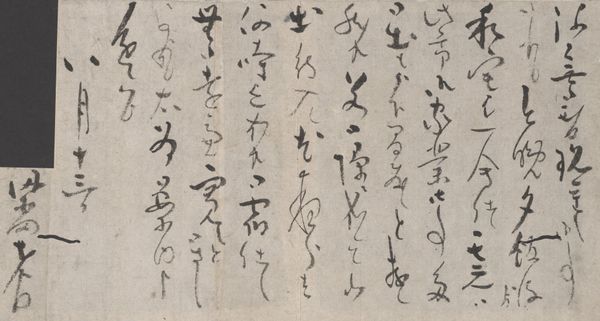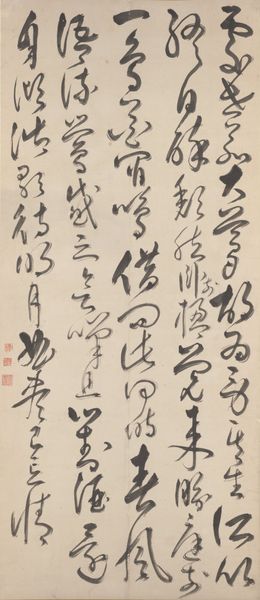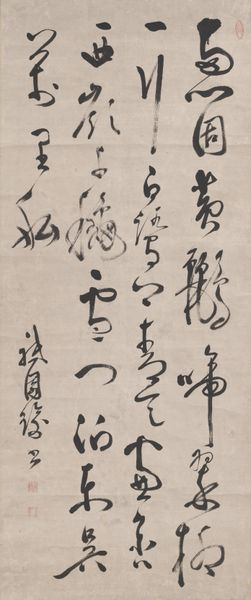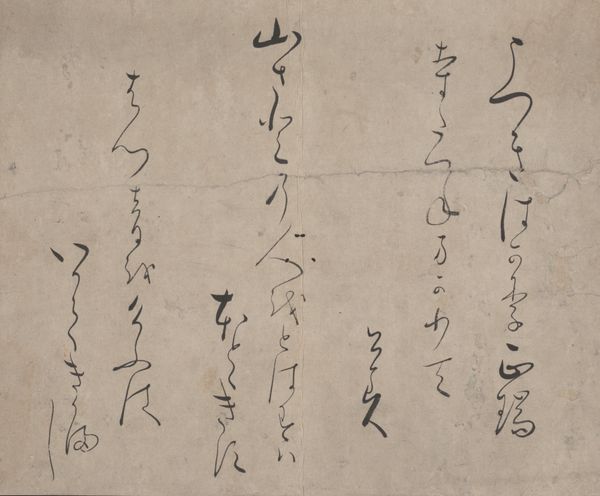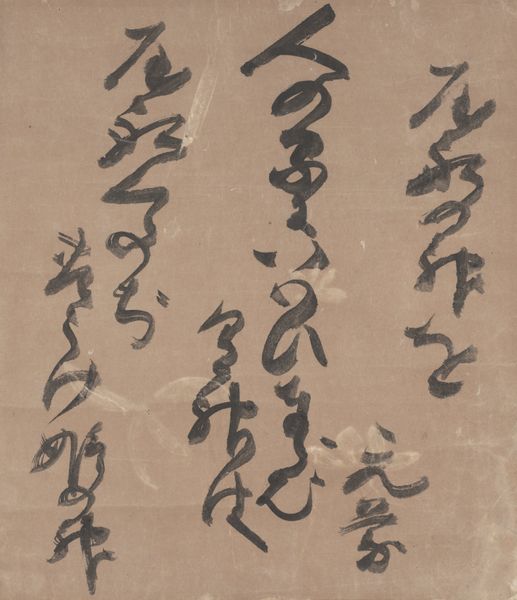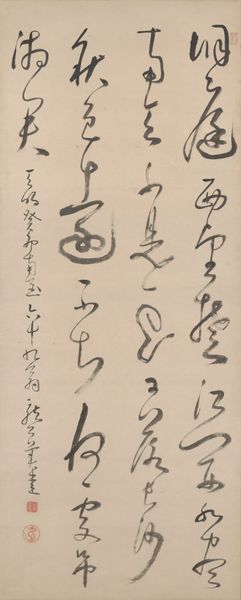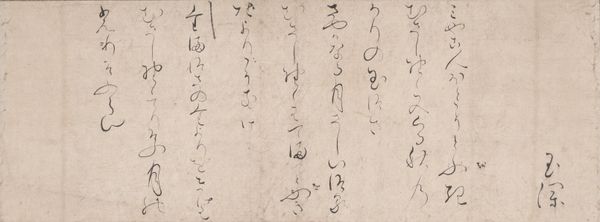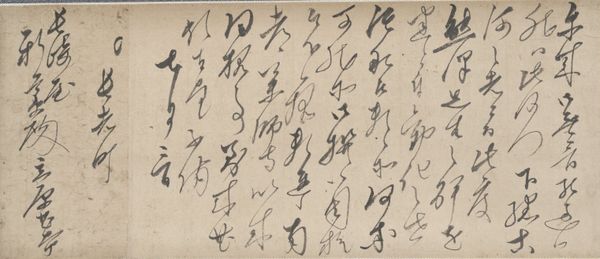
paper, ink-on-paper, ink
#
asian-art
#
paper
#
ink-on-paper
#
ink
#
watercolor
#
calligraphy
Dimensions: 6 1/4 × 15 5/8 in. (15.88 × 39.69 cm) (image)36 13/16 × 16 11/16 in. (93.5 × 42.39 cm) (mount, without roller)
Copyright: Public Domain
Curator: Here we have "Two Autumn Poems," dating back to the 18th century. It's ink on paper, a delicate dance of calligraphy attributed to Ike Gyokuran. Editor: Oh, it has the look of quiet melancholy, don't you think? Sparse strokes across a field of pale paper, like whispers of a forgotten season. The calligraphy seems to droop ever so slightly. Curator: Gyokuran was more than just a visual artist; she moved in intellectual circles in Kyoto and really was quite a figure in the Bunjinga movement. The poems aren’t just aesthetic; they’re imbued with cultural meaning and the personal feelings. I believe her writing and painting were considered inseparable. Editor: Absolutely. I'm curious about the choice of autumn. It's so often a symbol of decline, the winding down of life. Considering Gyokuran’s role as a female artist navigating a male-dominated space, I wonder if the autumnal themes speak to a deeper exploration of temporality and the limits placed on women. Curator: You know, I feel like autumn allows us to experience this sweet sadness that also invites clarity of mind. Like leaves falling to show us the true nature of the branches underneath. It's so true about her work and how you're saying that women were seen. I see how she found empowerment and respect through poetry, painting, calligraphy. Editor: Precisely! Calligraphy, especially, demands control, discipline, and a deep understanding of form. For a woman to excel in this area would be a profound statement of agency, refusing imposed silence. The way the ink bleeds into the paper, like memories seeping through... Curator: There’s definitely an intimate touch to it, you feel connected to the feeling. Like you’ve opened her diary. Do you think this artwork encourages an understanding of Japanese culture or is it perhaps a little exclusionary? Editor: While understanding some Japanese script might give one a more immediate access point, the themes of transience, the power of nature, these resonate across cultures. I believe the emotional accessibility supersedes linguistic barriers. It's an offering of shared human experience, but read through the specific experience of Gyokuran's world and experience. Curator: Beautifully said. It makes one wonder what stories the artwork can whisper. Editor: Indeed, it asks us to sit with ambiguity and the fragile nature of beauty. What a fitting meditation for a world caught in perpetual change.
Comments
No comments
Be the first to comment and join the conversation on the ultimate creative platform.

